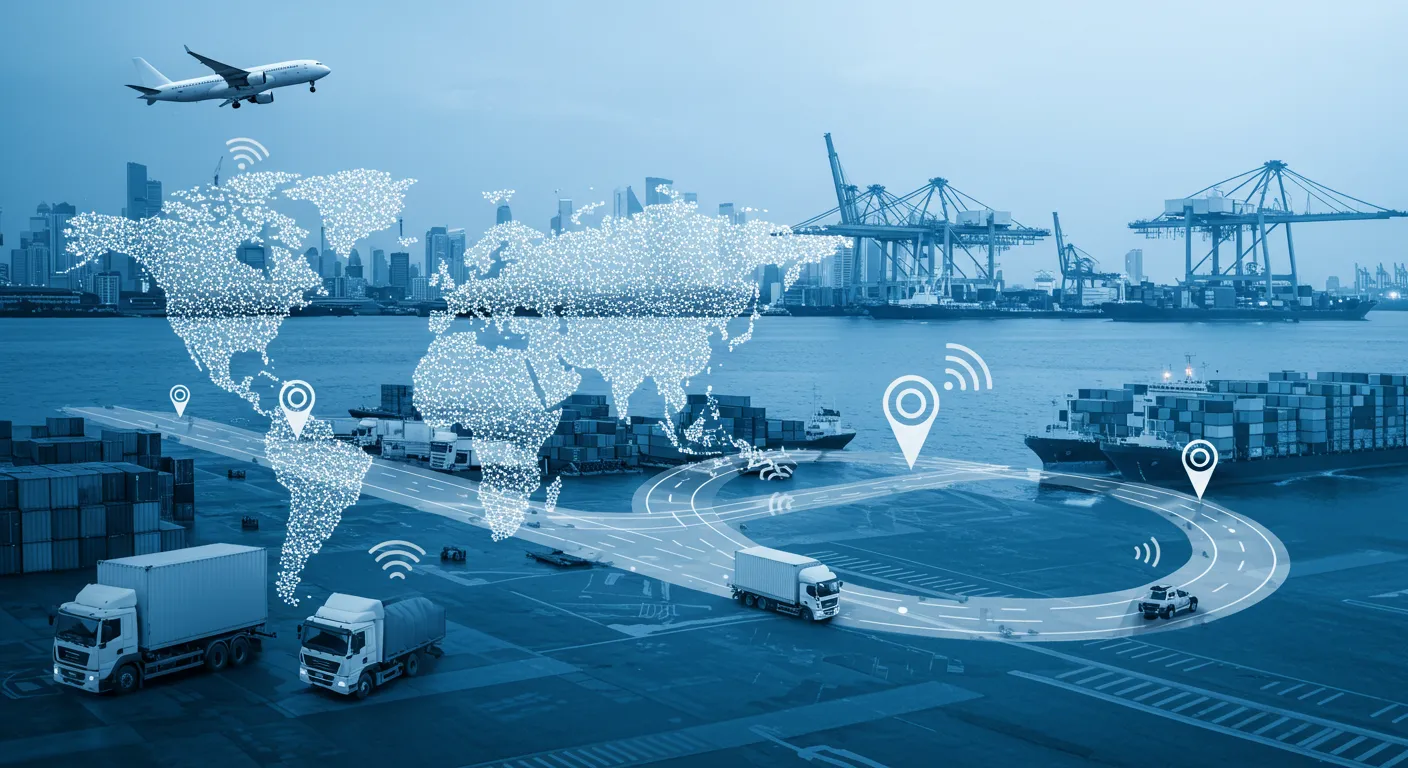Table of Contents
In today’s fast-paced global economy, the ability to monitor freight in real-time has transitioned from a luxury to a necessity. With supply chains becoming increasingly complex, real-time freight tracking solutions offer businesses the visibility and control needed to stay competitive and meet customer expectations.
Understanding Real-Time Freight Tracking
Real-time freight tracking involves the continuous monitoring of goods as they move through the supply chain. Utilizing technologies like GPS, IoT sensors, and advanced software platforms, businesses can access up-to-the-minute data on shipment locations, conditions, and estimated arrival times.
This level of transparency enables proactive decision-making, allowing companies to address potential issues before they escalate, optimize routes, and provide customers with accurate delivery information.
Leading Real-Time Freight Tracking Solutions in 2025
Several platforms have emerged as leaders in providing comprehensive real-time freight tracking capabilities. Here’s a comparison of some top solutions:
| Platform | Key Features | Ideal For |
|---|---|---|
| project44 | Real-time visibility, predictive analytics, multimodal tracking | Large enterprises with complex logistics |
| FourKites | End-to-end supply chain visibility, AI-driven insights, customizable dashboards | Businesses seeking deep analytics |
| Shippeo | Real-time tracking, ETA predictions, strong European network | Companies operating in Europe |
| GoComet | Multi-modal tracking, automated alerts, cost optimization tools | SMEs looking for cost-effective solutions |
| Samsara | IoT integration, driver behavior monitoring, fleet management tools | Fleets focusing on safety and efficiency |
Deep Dive: How Top Real-Time Freight Tracking Platforms Stack Up
project44
Strengths: Known for its expansive global carrier network and advanced predictive analytics, project44 delivers exceptionally accurate ETAs. It integrates seamlessly with major TMS platforms and provides multimodal tracking—road, rail, air, and ocean.
Challenges: Its full suite of features may be overkill (and overpriced) for smaller businesses. Some users report a steep learning curve during setup.
Standout Feature: Predictive ETAs powered by AI, which learn from traffic patterns, weather, and real-time disruptions.
FourKites
Strengths: Offers deep analytics and supply chain insights. The platform’s real-time collaboration features are a standout, allowing shippers, carriers, and customers to stay connected on a single interface.
Challenges: The interface is highly customizable but may overwhelm new users unfamiliar with analytics-heavy platforms.
Standout Feature: Their “Dynamic ETA” feature that recalculates delivery times continuously using machine learning.
Shippeo
Strengths: Extremely strong coverage across Europe, particularly in the EU logistics market. Shippeo emphasizes user-friendly design and real-time alerts that are genuinely useful.
Challenges: Not as robust in North America or Asia-Pacific regions. Works best for businesses operating primarily in Europe.
Standout Feature: A reputation for extremely low data latency—updates are nearly real-time.
GoComet
Strengths: Very accessible for SMEs. Its strength lies in its cost visibility and freight procurement modules, helping smaller businesses reduce freight spend without sacrificing performance.
Challenges: While it excels in ocean and air freight visibility, its trucking integrations may not be as advanced as other platforms.
Standout Feature: Freight rate benchmarking—allowing businesses to compare shipping costs against industry standards.
Samsara
Strengths: Ideal for fleet-heavy operations. Combines telematics with driver safety tools and dashcam footage, making it perfect for fleet visibility and compliance.
Challenges: More focused on North American markets and best suited for companies with in-house transportation rather than 3PL-heavy supply chains.
Standout Feature: Real-time vehicle tracking with live driver behavior analytics.
XPO
Strengths: XPO offers robust tracking capabilities integrated with its proprietary XPO Connect digital freight marketplace. Through xpo logistics tracking, shippers can access real-time location updates, dynamic pricing, and intelligent load-matching powered by machine learning.
Challenges: While ideal for shippers using XPO’s carrier services, the platform is more limited in scope for those seeking multimodal or third-party integration flexibility.
Standout Feature: Seamless tracking within the XPO network, enhanced by predictive analytics and real-time exception management.
Benefits of Implementing Real-Time Freight Tracking
1. Enhanced Visibility and Transparency
Real-time tracking provides a clear view of shipments at every stage, reducing uncertainties and enabling better planning. This transparency builds trust with customers and partners alike.
2. Improved Operational Efficiency
Access to real-time data allows for dynamic route adjustments, reducing delays and optimizing resource utilization. It also aids in inventory management by providing accurate delivery timelines.
3. Proactive Issue Resolution
By identifying potential disruptions early, businesses can take corrective actions promptly, minimizing the impact on delivery schedules and customer satisfaction.
4. Cost Savings
Optimized routes and reduced delays lead to lower fuel consumption and decreased operational costs. Additionally, minimizing late deliveries can reduce penalty fees and improve profitability.
5. Enhanced Customer Experience
Providing customers with real-time updates on their shipments enhances their experience, leading to increased loyalty and repeat business.
What the Experts Are Saying
According to a Gartner report, over 70% of supply chain leaders plan to increase investment in real-time transportation visibility platforms by the end of 2025. The rationale? Better data leads to smarter logistics.
Sarah Jensen, a senior logistics analyst at SCM Insights, notes:
“Real-time freight tracking is the missing link between operational efficiency and customer trust. It’s no longer about just knowing where something is—it’s about knowing when it will arrive, why it’s delayed, and how to fix it before it affects the bottom line.”
Also Read: Williamson Inc Small Business Academy: Empowering Entrepreneurs for Success
Emerging Technologies in Freight Tracking
The freight tracking landscape is continually evolving, with new technologies enhancing capabilities:
- Internet of Things (IoT): IoT devices collect and transmit data on shipment conditions, such as temperature and humidity, ensuring sensitive goods are transported safely.
- Artificial Intelligence (AI): AI analyzes vast amounts of tracking data to predict potential delays and suggest optimal routes.
- Blockchain: Blockchain technology offers secure and transparent tracking records, reducing fraud and improving accountability.
- 5G Connectivity: The rollout of 5G networks enhances data transmission speeds, allowing for more responsive tracking systems.
Real-World Impact: A Case Study
Consider a mid-sized e-commerce company that implemented a real-time freight tracking solution. Within months, they reported:
- A 25% reduction in delivery delays
- A 15% decrease in customer complaints related to shipping
- Improved inventory turnover due to better delivery predictability
These improvements not only enhanced customer satisfaction but also contributed to significant cost savings and operational efficiencies.
Choosing the Right Solution for Your Business
When selecting a real-time freight tracking solution, consider the following:
- Scalability: Ensure the platform can grow with your business needs.
- Integration: Look for solutions that seamlessly integrate with your existing systems.
- User Experience: A user-friendly interface ensures quicker adoption and better utilization.
- Support and Training: Opt for providers that offer robust customer support and training resources.
Trends to Watch in 2025
- Predictive Freight Intelligence Beyond just tracking, companies are now focusing on forecasting potential disruptions using historical and real-time data.
- Carbon Emissions Tracking With the push for sustainability, more freight tracking solutions are integrating carbon footprint data, helping businesses report and reduce their logistics emissions.
- Blockchain for Trust & Transparency Some platforms are testing blockchain tech to create tamper-proof shipment logs—especially valuable for pharmaceuticals and high-value goods.
- Customer-Facing Portals More businesses are offering real-time tracking directly to customers, enhancing transparency and reducing “Where’s my order?” inquiries.
Final Thoughts
Incorporating real-time freight tracking solutions is no longer optional but essential for businesses aiming to thrive in the modern logistics landscape. By enhancing visibility, improving efficiency, and elevating customer satisfaction, these technologies provide a competitive edge that can drive growth and success in 2025 and beyond.



